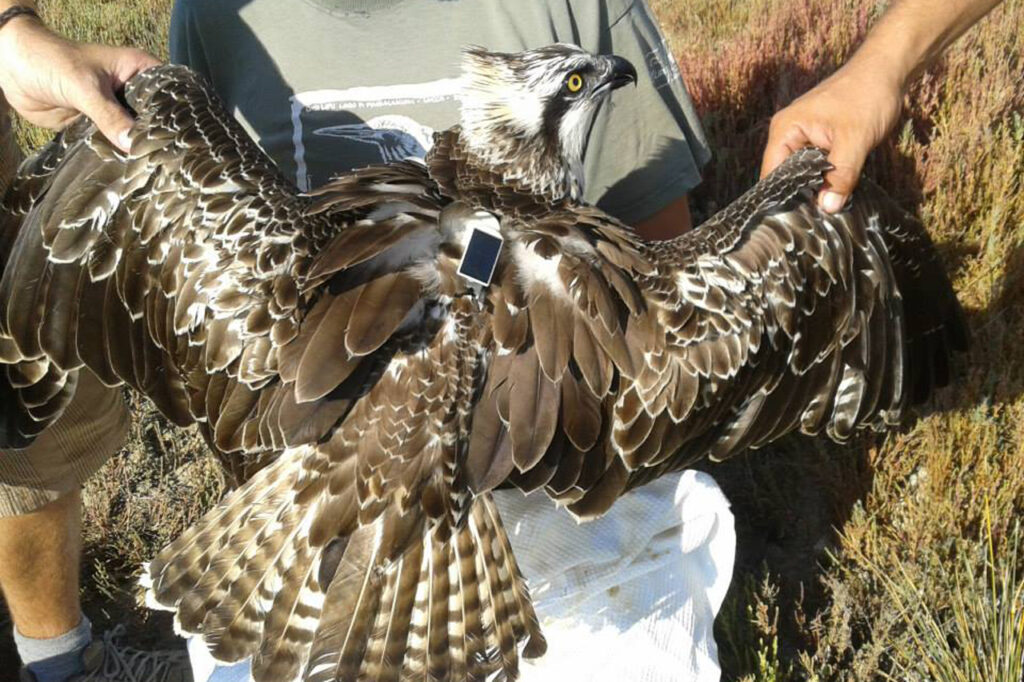Know to protect
If the Maremma Park was able to be created in 1975, it was also thanks to the efforts of some researchers, especially botanists and foresters, who had realized since the 1960s the extraordinary value of this island of Mediterranean nature which had survived the development of the coast started after the reclamations of the first decades of the twentieth century. Since then, three generations of researchers, coming from universities and other research centers throughout Italy, have dedicated themselves to studying the complex ecology of this territory. However, their work does not only serve to better understand the Park’s ecosystems and the plants and animals that are its protagonists, documenting the stages of the renaturalization of the territory. The results are in fact essential to establish the levels of protection for each area, but also to manage the various components of the ecosystem which after many centuries of use and modification by man are no longer in balance with each other. A striking example is the great density of wild boars and fallow deer, accentuated by the lack of natural predators, which can damage the renewal of natural vegetation.
In short, for researchers the Maremma Park is a sort of large open-air laboratory, one of the very few true “gyms” for studying Mediterranean environments in Italy, in which they can continue to study and accompany the restoration – almost always spontaneous, but in some cases also guided – by ecosystems. It will be a long job, potentially destined to never end. Both because nature’s times are long, and because there is no balance in nature, but a continuous dynamic.

The green recovery
After the establishment of the Park, the end of sheep farming and therefore of a very strong grazing pressure, the abandonment of most of the olive groves, and the reduction of forest cutting to a minimum, allowed a recovery of vegetation. In the olive groves, for example, where fallow deer and roe deer have taken the place of sheep, dozens of species of wild orchids have appeared. In the most favorable areas, such as at the base of the Uccellina hills on the side facing the hinterland, some woods that had been periodically cut down since time immemorial have been restarted as high forests.
Over the years, botanists have drawn a detailed map of the vegetation, documenting the presence of 615 species of plants belonging to 23 different habitats. Among these, an endemic one was discovered, that is, one that does not live anywhere else: Limonium etruscum, a plant with small but beautiful flowers that lives in the innermost parts of the coastal dune.
Among the most interesting studies is the one on ecological succession in the Grand Ducal pine forest. Since the pine forest is no longer exploited for the collection of pine nuts and is no longer managed, for example with the periodic cleaning of the undergrowth, the environment has begun to be recolonized by the plants of the spontaneous flora of the Mediterranean. Other studies instead concern the effects on vegetation of prolonged periods of drought due to climate change. Perhaps the most curious study concerns the holm oaks of the Uccellina hills: genetic investigations have ascertained their genetic proximity to those of Sardinia, leading the researchers to hypothesize that the wood pigeons brought the seeds here from the island, in their annual movements across the Tyrrhenian Sea.
The fate of the birds
During the 1980s, ornithologists dedicated themselves above all to the systematic description of all the Park’s avifauna, which is the cognitive basis for any conservation intervention.
Birds were the animal component that benefited most from the end of hunting. The European roller, for example, is making a clear recovery after reaching the brink of extinction in the 1970s, with no more than 7-8 nesting pairs.
The greatest success of the Park’s establishment, however, was the protection of aquatic birds. The areas around the mouth of the Ombrone have become a very precious wintering area, especially for thousands of geese and cranes, the large herbivorous birds of the plains which move along the coast during the day but find here an undisturbed environment where they can spend the Night. For this reason, some areas, such as the Trappola swamp, have become integral reserve areas. Since 1984, researchers have been monitoring and counting waterbirds every year, and have documented their sharp increase.
An important success was the reintroduction of the osprey between 2006 and 2010, with the first nesting pair in Italy after almost fifty years in 2011.
The return of the wolf
Even for mammals, verifying the distribution and numerical consistency, the ecology and behavior of the most important species has made it possible to build the indispensable knowledge base on which today’s management is based.
The wild boar, symbol of the Park and of Maremma itself, has been studied extensively and has been the subject of containment interventions right away due to the damage it can cause to natural vegetation and crops, as well as to other animal species. The same thing, starting a few years later, happened for the fallow deer, which over the last few decades has expanded at the expense of the roe deer. Every year, for almost twenty years, the size of the ungulate populations has been estimated, also to be able to decide and modulate containment interventions, which have always been managed by the Park.
Over time, researchers also dedicated themselves to studying the ecology of badgers, porcupines, fallow deer, roe deer, but above all foxes, and in 1990 the wild cat was successfully reintroduced, which had most likely disappeared from the Park territory a few years ago. decade earlier.
The big news, however, was the spontaneous return of the wolf in the 2000s, which completed the environmental mosaic, also transforming the Park into a large laboratory for the study of the balance between the various species of mammals, and between them and the rest of the environment. What we discover here can help understand the consequences of the return of the wolf in other regions of Europe too. However, this is a difficult study, because mammals have nocturnal habits and seeing wolves is very difficult. It is therefore necessary to count its traces, collect and analyze its excrement, and patiently examine the videos of dozens of camera traps. We thus know that today two or three families live in the Park, that wild boars and deer are their favorite prey, and that other mammals are rapidly adapting to the new predators. For example, fallow deer have increasingly diurnal habits, to avoid the night when the wolf is more active, while the favorite prey has become wild boars, which rely on group defense to better protect themselves. The overall result is that interventions to contain wild boars and fallow deer are clearly decreasing, and the hope is that they will soon be increasingly limited because the ecosystem will have found its dynamic balance.
WHAT TO KNOW

